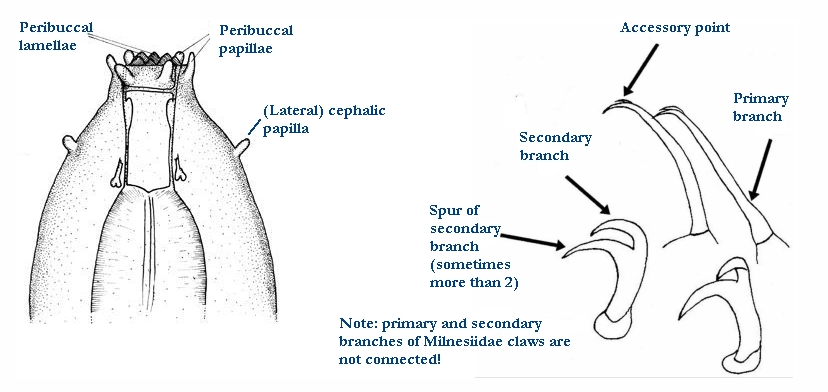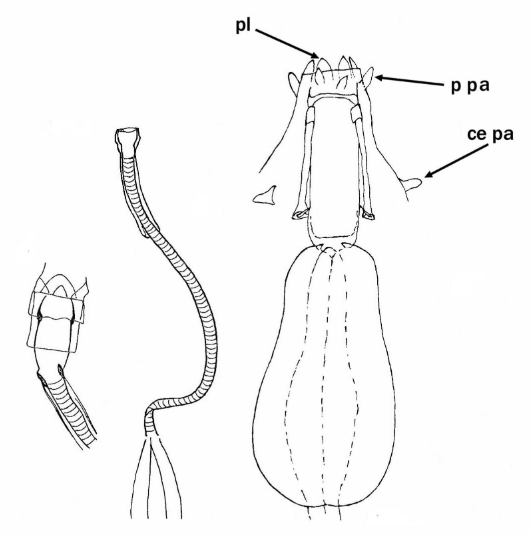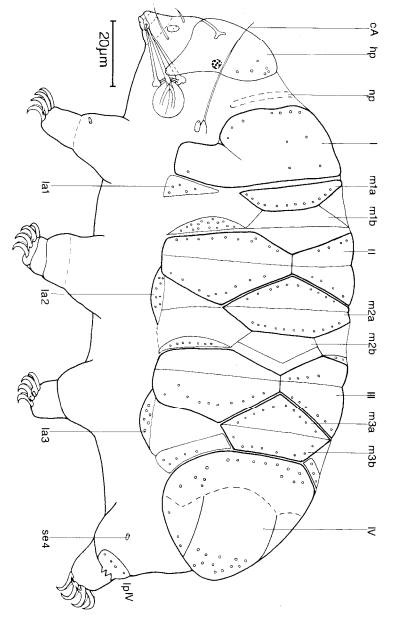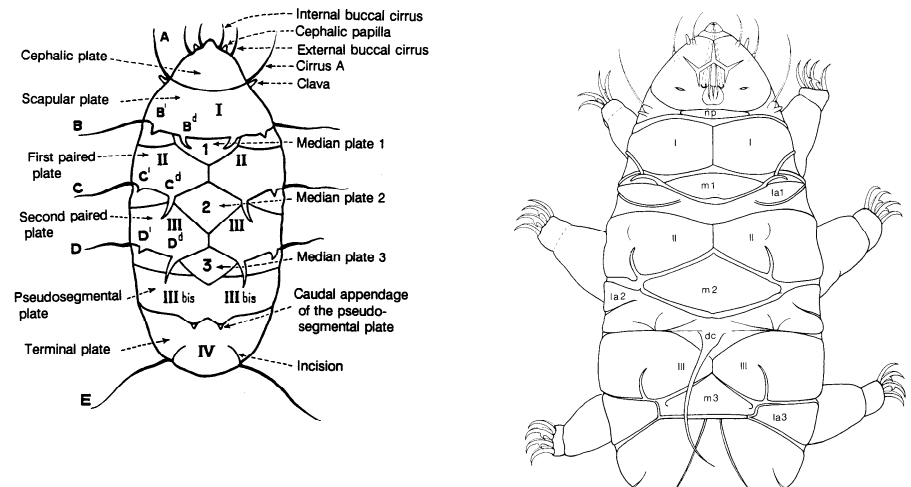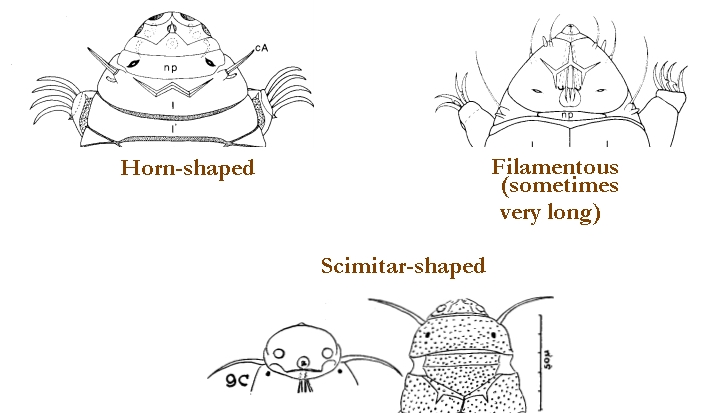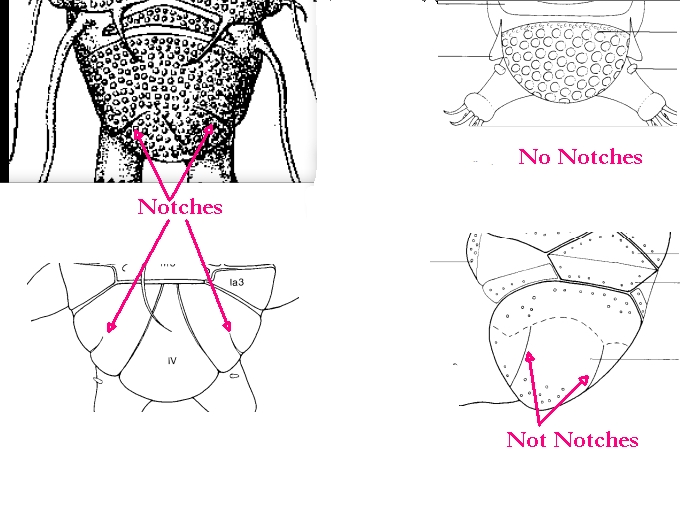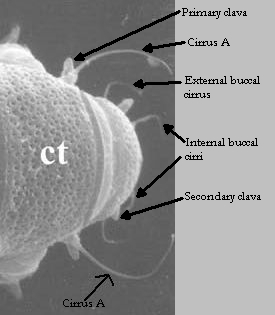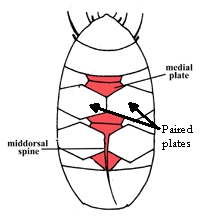Diphasconinae

“Eutardigrades with buccopharyngeal apparatus of Diphascon-type and anterior apophyses shaped as “blunt” or “semilunar” hooks (see Pilato 1987). Posteriodorsal apodeme (“drop-like” structure) present or absent, pharyngeal apophyses present. Asymmetrical claws of Hypsibiidae-type. Eggs either deposited into [shedded] cuticle and smooth or layed freely and with ornamented shells.” Dastych H. 1992. Paradiphascon manningi gen. n. sp. […]
Hypsibiidae

Hypsibiidae from Pilato 1969: “Senza alcuna appendice cefalica. Le due diplounghie di ciascuna zampa sono disposte asimmetricamente rispetto al piano mediano della zampa stessa e posssono essere di tipo Isohypsibius o di tipo Hypsibius. In ogni zampa le due diplounghie sono talvolta quasi uguali fra loro ma molto spesso profondamente diverse per forma e dimensioni. […]
Hypsibius
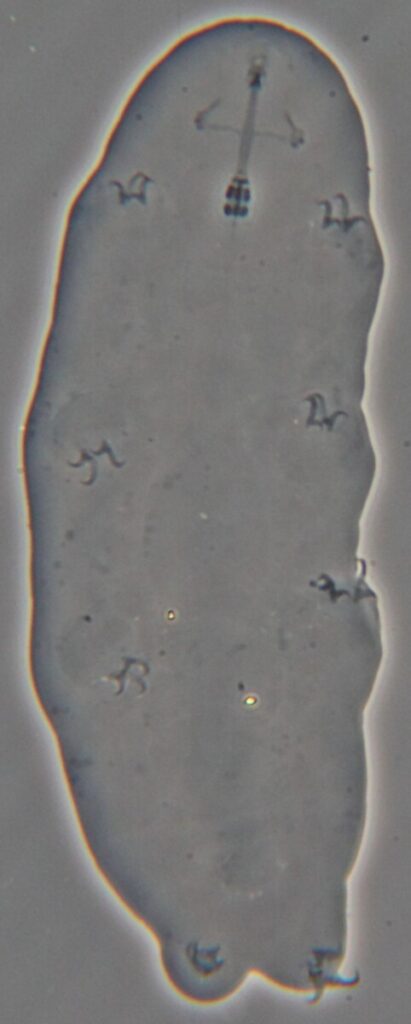
Hypsibioidea from Pilato 1969 in Marley et al. 2011: “Parachela; claws asymmetrical (2121); Hypsibius-type claw pairs; AISM hooked (or, if the buccal tube is elongated, AISM can be broad ridges).” Hypsibioidea from Bertolani et al. 2014: “Double claws asymmetrical with respect to the median plane of the leg (2121), the external (or posterior) claw often […]
Borealibius
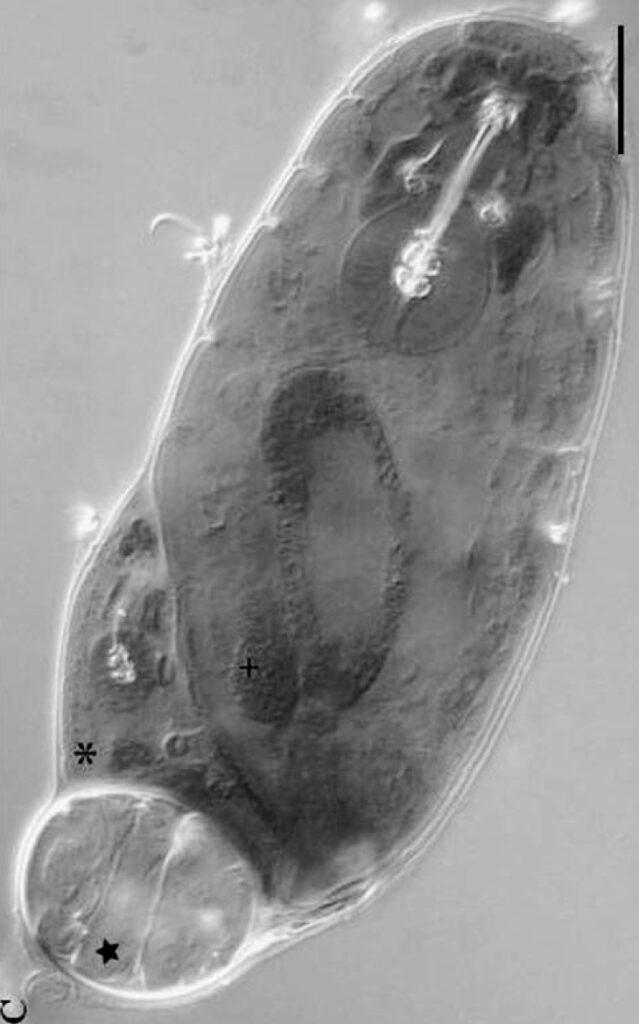
Hypsibioidea from Pilato 1969 in Marley et al. 2011: “Parachela; claws asymmetrical (2121); Hypsibius-type claw pairs; AISM hooked (or, if the buccal tube is elongated, AISM can be broad ridges).” Hypsibioidea from Bertolani et al. 2014: “Double claws asymmetrical with respect to the median plane of the leg (2121), the external (or posterior) claw often […]
Diphascon
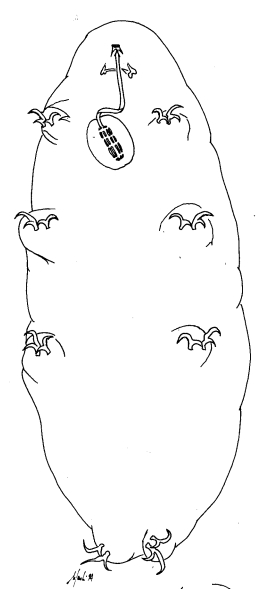
Genus description from Plate 1888: “Diese Gattung hat grosse Aehnlichkeit mit Macrobiotus oberhäuseri, aber der kleine, runde Schlundkopf sitzt in der Mitte des Oesophagus. Das Gebiss ist zart. […] An jedem Bein 2 Doppelhaken, deren krallen am Grunde verwachsen sind.” Translated: This genus is very similar to Macrobiotus oberhäuseri, but the small, round pharynx sits […]
Mixibius
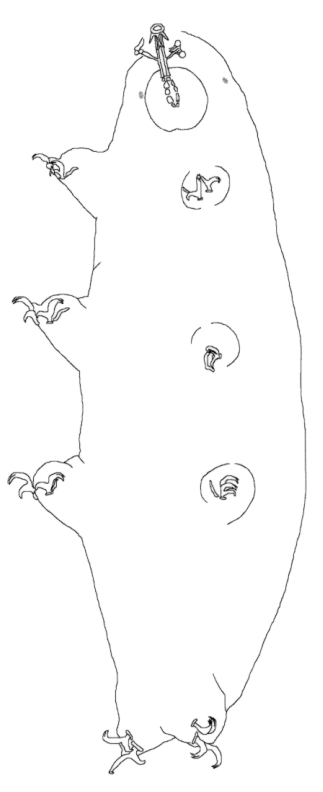
Hypsibioidea from Pilato 1969 in Marley et al. 2011: “Parachela; claws asymmetrical (2121); Hypsibius-type claw pairs; AISM hooked (or, if the buccal tube is elongated, AISM can be broad ridges).” Hypsibioidea from Bertolani et al. 2014: “Double claws asymmetrical with respect to the median plane of the leg (2121), the external (or posterior) claw often with flexible main branch; double claws […]




